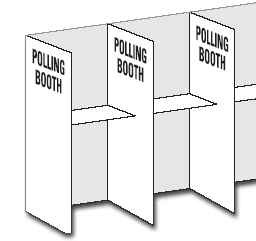Editorial: China and the brutal oppression of the Uighur minority population
July 30, 2020
Editor’s Note: This editorial contains descriptions of violence and human rights violations. Sensitive content may follow.
Since 2014, China has increased maltreatment of the Uighur ethnic group in the northwestern province of Xinjiang, and since 2017 they have started placing them in concentration camps. The world is finally talking about it, but we need to do more.
The Uighurs are a mostly Muslim Turkic ethnicity who regard themselves as culturally and ethnically close to Central Asian nations. The majority live in Xinjiang, where they number about 11 million people.
Uighur communities are also found in Uzbekistan, Kyrgyzstan and Kazakhstan, and several thousand live in Australia. Uighurs speak their own language — an Asian Turkic language similar to Uzbek — and most practice a moderate form of Sunni Islam.
Xinjiang has been under the control of China since it was annexed in 1949. Many Uighurs still identify their homeland by its previous name of East Turkestan.
Once situated along the ancient Silk Road trading route, Xinjiang is oil- and resource-rich. As the region developed along with the rest of China, Xinjiang attracted more Han Chinese, a migration encouraged by the Chinese government.
That demographic shift inflamed ethnic tensions between the two groups. In 2009, for example, riots broke out in Urumqi, the capital of Xinjiang, after Uighurs protested their treatment by the government and the Han majority. About 200 people were killed and hundreds were injured during the unrest.
The Chinese government blamed the protests on violent separatist groups, a tactic it has continued to use against the Uighurs and other religious and ethnic minorities across China.
The Chinese government justifies its clampdown on the Uighurs and Muslim minorities by saying it’s trying to eradicate extremism and separatist groups. Attacks, some violent, by Uighur separatists have occurred in recent years, and some Uighurs have become foreign fighters, joining groups like ISIS.
But there’s little evidence of any cohesive separatist movement — with jihadist roots or otherwise — that could challenge the Chinese government, experts told Jen Kirby, the foreign and national security reporter for Vox.
But beyond what the Chinese government is claiming is a “justified reasoning” are the actual atrocities being committed against people.
Surveillance
The most minor of the terrible actions taken against the Uighur people is the large increase in surveillance in Xinjiang to specifically monitor and target their activity.
Increased and aggressive mass surveillance and police presence accompanied the move of Chen Quanguo, a powerful Communist Party boss, from Tibet to Xinjiang, including his “grid management” policing system.
As The Economist reported, “authorities divide each city into squares, with about 500 people. Every square has a police station that keeps tabs on the inhabitants. So, in rural areas, does every village.”
Security checkpoints where residents must scan identification cards were set up at train stations and on roads into and out of towns. Authorities have reportedly used facial recognition technology to track residents’ movements.
Beyond this “monitoring” style of surveillance, Chinese authorities have also taken more invasive actions against the Uighur people as well.
Chinese officials have reportedly taken blood and DNA samples, framed as mandatory checkups. Police have also confiscated phones to download the information contained on them to scan through later or track physical location of these owners.
Police have also confiscated passports to prevent Uighurs from traveling abroad. Uighurs abroad say their families are targeted by Chinese officials, part of a pressure campaign to keep the diaspora from speaking out.
These surveillance techniques go even further, and the Chinese government has been reportedly keeping lists of Uighur families to track them.
In February 2020, a leaked 137-page spreadsheet from Karakax County in Xinjiang showed exactly how Uighur families were tracked by authorities. The spreadsheet contained over 300 names of Uighur families, including the identities of people committed to the concentration camps, and those whom officials were monitoring. Some of those being tracked were as young as 16.
Among what caught the attention of authorities — causing reason for detainment or being surveilled — included obtaining a passport, praying regularly or even wearing a beard, according to the New York Times. Family members also were monitored for participating in religious ceremonies like funerals or weddings.
Religious Oppression
In 2017, President Xi Jinping issued a directive that “religions in China must be Chinese in orientation” and “adapt themselves to socialist society.” The directive led to a fresh crackdown on religious practice that particularly affected the Uighurs.
China’s crackdown on the Uighurs began as part of a policy of “deextremification”. Under this policy, Beijing imposed terrifying and draconian restrictions in Xinjiang intended to erase the Uighurs’ Islamic religious and cultural identity.
According to research by Adrian Zenz, a leading scholar on China’s policies toward the Uighurs and senior research fellow in China studies at the Victims of Communism Memorial Foundation, Chinese officials began using dedicated camps in Xinjiang around 2014, around the same time China blamed a series of terrorist attacks on radical Uighur separatists.
Some of the targeted “deextremification” restrictions include a ban on certain Muslim names for babies and another on long beards and veils. The government also reportedly tried to promote drinking and smoking because people who didn’t drink or smoke — like devout Muslims — were deemed suspicious.
Dozens of mosques in Xinjiang have also been demolished, according to PBS.
Chinese officials have justified these policies as necessary to counter religious radicalization and extremism, but critics say they are meant to curtail Islamic traditions and practices.
The Chinese government is “trying to expunge ethnonational characteristics from the people,” James Millward, a professor at Georgetown University, said in 2018. “They’re not trying to drive them out of the country; they’re trying to hold them in.”
“The ultimate goal, the ultimate issue that the Chinese state is targeting, [is] the cultural practices and beliefs of Muslim groups,” Millward added.
Forced Labor
Beyond the concentration camps, there is now growing evidence Uighurs are being forced to work in Chinese factories, which almost certainly means the exploitation of Uighurs is embedded within global supply chains.
“It is becoming increasingly hard to ignore the fact that goods manufactured in East Turkestan have a high likelihood of being produced with forced labor,” Nury Turkel, chair of the board of the Uyghur Human Rights Project, told Congress in October 2019.
The forced labor extends beyond just Xinjiang and into other parts of China, according to recent reports. A March 2020 report from the Congressional-Executive Commission on China also found Uighur forced labor taking place within the concentration camps.
According to a report from the Australian Strategic Policy Institute (ASPI), at least 80,000 Uighurs were taken from Xinjiang and transferred to various factories around China between 2017 and 2019, but this could be an underestimate due to the limited information coming out of China.
The ASPI report stated some Uighurs were taken directly from concentration camps to the factories, though the conditions mirrored those they faced in detention. Uighurs were under constant surveillance, forced to undergo Mandarin language instruction and other political teachings in their free time. Most critically, they cannot leave.
In July 2019, the Australian Broadcasting Corporation reported a story of a Uighur woman, 38-year-old Dilnur, who was sent to an internment camp along with her husband. In May, Dilnur had contacted her sister in Australia to tell her she’d be taken from the camps and sent to work in a technology factory in Urumqi.
“660 people are brought in shackled and handcuffed and it is big,” she wrote.
Due to China being tightly locked down about the Uighur situation, it’s hard to get full information, but leaked documents and testimony from some workers who’ve been forced into factories offer compelling evidence, according to Vox.
The revelations found through these documents and testimony raise serious questions for the global supply chain and anyone who buys goods that passed through or originated in China.
The ASPI found that at least 27 suspected factories are using laborers from Xinjiang, which potentially have connections to 83 major global brands. The Xinjiang region, specifically, is a major cotton hub for China, meaning cotton produced by forced labor in Xinjiang might end up in the final products of many clothing lines produced by global brands.
This terrible forced labor system extends beyond just clothing, it also includes important protection equipment.
An investigation in the New York Times found forced Uighur labor is being used to make personal protective equipment, specifically disposable surgical face masks many need to stay safe during the COVID-19 pandemic.
Detainment
The most obvious crime to the outside world — and the reason many people are speaking out against the Chinese government — is the creation of concentration camps in Xinjiang.
It is the largest mass internment of an ethnic-religious minority group since World War II.
Experts estimate as many as 3 million people have disappeared into these camps at some point, with about 1 million currently being held in so-called “reeducation centers” and forced to undergo psychological indoctrination programs, such as studying Communist propaganda and giving thanks to Chinese President Xi Jinping. Chinese officials have also reportedly used waterboarding and other forms of torture, including sexual abuse, as part of the indoctrination process.
Inside these camps, detainees are reportedly subjected to bizarre exercises aimed at “brainwashing” them, as well as physical torture, rape and sleep deprivation. James Millward, the Georgetown professor, said the Chinese authorities see the camps as “a kind of conversion therapy, and they talk about it that way.”
At a July 2018 hearing of the Congressional-Executive Commission on China — a special bipartisan committee set up by Congress to monitor human rights in China — Jessica Batke, a former research analyst at the State Department, testified that “in at least some of these facilities, detainees are subject to waterboarding, being kept in isolation without food and water and being prevented from sleeping.”
“They are interrogated about their religious practices and about having made trips abroad,” Batke continued. “They are forced to apologize for the clothes they wore or for praying in the wrong place at the wrong time.”
An investigation by Reuters in 2018 found that, according to satellite imagery, 39 suspected camps almost tripled in size between April 2017 and August 2018. “Collectively, the built-up parts in these 39 facilities now cover an area roughly the size of 140 soccer fields,” the report said.
Beyond those 39 facilities, there have been a total of 94 possible concentration camps identified in Xinjiang, according to a 2018 list.
At first, the Chinese government denied these camps even existed. China’s state-run media at one time dismissed the reports of detention camps as Western media “baselessly criticizing China’s human rights.”
But after more and more people have started to call out these atrocities, China has since stopped pretending the camps aren’t real.
Instead, the government is trying to cast them as both lawful and not harmful. In October 2018, Chinese officials effectively legalized the “education camps” for the stated goal of eradicating extremism. Later that month, a government official in Xinjiang compared the detention centers to “boarding schools” and its detainees to “students.”
As stated earlier, what’s really going on in the concentration camps is difficult to know for sure because of China’s disinformation campaign and the clampdown on information about what is happening in Xinjiang. However, leaked official documents and firsthand accounts from people detained in the camps have helped outside experts and researchers take a look into the abuses that take place there.
According to Vox, these camps are much more like prisons than so-called boarding schools. A 2018 report by Agence France-Presse (AFP) described camps in which thousands of guards carry spiked clubs, tear gas and stun guns to surveil detainees who are held in buildings surrounded by razor wire and infrared cameras.
AFP journalists also reviewed public documents showing government agencies overseeing the camps purchased 2,768 police batons, 550 electric cattle prods, 1,367 pairs of handcuffs and 2,792 cans of pepper spray.
Under no circumstances could there be a valid explanation for how a facility that requires those materials to be an “education” camp.
Leaked drone footage, believed to be recorded last August, appeared to show hundreds of Uighur prisoners, blindfolded and handcuffed, being transferred by train. This is eerily similar to how Nazi Germany transported Jewish prisoners during World War II.
Even after all these claims the Chinese government claims the camps are merely by choice and training centers for teaching people job skills. The government has justified the oppression in Xinjiang as an attempt to clamp down on terrorism and extremism emanating from the Uighur separatist movement.
There have been incidents of violent unrest over the years, including a few deadly terrorist attacks, and at least one Uighur extremist group in the region, the East Turkistan Islamic Movement, has ties to al-Qaida and the global jihadist movement.
But most experts say Beijing’s repression and subjugation of millions of Uighurs is vastly disproportionate to the comparatively minor terror threat in the region.
Forced Birth Control
Even after everything else the Chinese government has done to the Uighur people, it does get much worse.
The Chinese government is taking horrendous measures to decrease birth rates among Uighurs and other minorities as part of a sweeping campaign to curb its Muslim population, even as it encourages some of the country’s Han majority to have more children.
While individual women have spoken out before about forced birth control, the practice is far more widespread and systematic than previously known, according to an Associated Press (AP) investigation based on government statistics, state documents and interviews with 30 ex-detainees, family members and a former detention camp instructor.
The campaign over the past four years in the far west region of Xinjiang is leading to what some experts are calling a form of “demographic genocide”.
The Chinese government regularly subjects minority women to pregnancy checks and forces intrauterine devices, sterilization and even abortion on hundreds of thousands, according to the AP investigation. Even while the use of IUDs and sterilization has fallen nationwide in China, it is rising sharply in Xinjiang.
Birth rates in the mostly Uighur regions of Hotan and Kashgar plunged by more than 60 percent from 2015 to 2018. Across the Xinjiang region, birth rates continue to plummet, falling nearly 24 percent last year alone — compared to just 4.2 percent nationwide, statistics show.
The hundreds of millions of dollars the government pours into birth control has transformed Xinjiang from one of China’s fastest-growing regions to among its slowest in just a few years, according to research obtained by the AP by Zenz.
“This kind of drop is unprecedented… there’s a ruthlessness to it,” Zenz told the AP. “This is part of a wider control campaign to subjugate the Uighurs.”
In 2014, soon after President Xi Jinping visited Xinjiang, the region’s top official said it was time to implement “equal family planning policies” for all ethnicities and “reduce and stabilize birth rates.” In the following years, the government declared that instead of just one child, Han Chinese could now have two and three in Xinjiang’s rural areas, just like the minority populations, which includes the Uighur.
But while equal on paper, in practice Han Chinese are largely spared the abortions, sterilizations, IUD insertions and detentions for having too many children that are forced on Xinjiang’s other ethnicities, interviews and data show. Some rural Muslims are punished even for having the three children allowed by the law.
The “population control” measures are supported by mass detention in the concentration camps both as a threat and as a punishment for failure to comply with the measures.
Having too many children is a major reason people are sent to the concentration camps, the AP investigation found, with the parents of three or more children ripped away from their families unless they can pay huge fines. Police often raid homes, terrifying parents as they search for hidden children.
In 2017, the Xinjiang government tripled the already hefty fines for violating family planning laws for even the poorest residents — to at least three times the annual disposable income of the county. While fines also apply to Han Chinese, only minorities are sent to the detention camps if they cannot pay, according to interviews and data. Government reports show the counties collect millions of dollars from the fines each year.
Once in the concentration camps, women are subjected to a wide range of horrors, including forced IUDs and what appear to be pregnancy prevention shots, according to former detainees. They are also made to attend lectures on how many children they should have.
Seven former detainees told the AP they were force-fed birth control pills or injected with fluids, often with no explanation. Many felt dizzy, tired or ill, and women stopped getting their periods. After being released and leaving China, some went to get medical checkups and found they were sterile.
It’s unclear what former detainees were injected with, but Xinjiang hospital slides obtained by the AP show pregnancy prevention injections, sometimes with the hormonal medication Depo-Provera, are a common family planning measure.
A former detainee of a concentration camp, named Tursunay Ziyawudun, said she was injected until she stopped having her period, and kicked repeatedly in the lower stomach during interrogations. She now can’t have children and often doubles over in pain, bleeding from her womb, she said.
This horror show doesn’t stop at forced birth control because some women have even reported forced abortions.
Ziyawudun said a “teacher” at her camp told women they would face abortions if found pregnant during gynecology exams.
A woman in another “class” turned out to be pregnant and disappeared from the camp, Ziyawudun said. She added that two of her cousins who were pregnant got rid of their children on their own because they were so afraid.
Another woman, Gulbahar Jalilova, confirmed that detainees in her camp were forced to abort their children. She said she also saw a new mother, still leaking breast milk, who did not know what had happened to her infant. And she met doctors and medical students who were detained for helping Uighurs dodge the system and give birth at home.
Another woman, Gulzira Mogdyn, who was on a visit from Kazakhstan back to China in December of 2017, said she was taken to a hospital after police found WhatsApp on her phone. A urine sample revealed she was 10 months pregnant with her third child. Officials told Mogdyn she needed to get an abortion and threatened to detain her brother if she didn’t.
During the procedure, medics inserted an electric vacuum into her womb and sucked her fetus out of her body. “Two humans were lost in this tragedy — my baby and me,” Mogdyn told the Post.
The “success” of China’s push to control births among Muslim minorities shows up in the numbers for IUDs and sterilization, according to the AP.
The AP found that in 2014, just over 200,000 IUDs were inserted in Xinjiang. By 2018, that jumped more than 60 percent to nearly 330,000 IUDs. At the same time, IUD use went down elsewhere in China.
A former teacher drafted to work as an “instructor” at a concentration camp described her experience with IUDs to the AP.
She said it started with flag-raising assemblies at her compound in the beginning of 2017, where officials made Uighur residents recite “anti-terror” lessons. They chanted, “If we have too many children, we’re religious extremists…. That means we have to go to the training centers.”
Police rounded up over 180 parents with too many children until “not a single one was left,” she said. At night, she said, she lay in bed, stiff with terror, as officers with guns and tasers hauled her neighbors away. From time to time police pounded on her door and searched her apartment for Qurans, knives, prayer mats and of course children, she said.
Then, that August, officials in the teacher’s compound were told to install IUDs on all women of childbearing age. She protested, saying she was nearly 50 with just one child and no plans to have more. Officials threatened to drag her to a police station and strap her to an iron chair for interrogation.
She was forced onto a bus with four armed officers and taken to a hospital where hundreds of Uighur women lined up in silence, waiting for IUDs to be inserted. Some wept quietly, but nobody dared say a word because of the surveillance cameras hanging overhead.
Her IUD was designed to be irremovable without special instruments. The first 15 days, she got headaches and had nonstop menstrual bleeding.
The AP reported Chinese health statistics also show a sterilization boom in Xinjiang.
Budget documents obtained by Zenz show that starting in 2016, the Xinjiang government began pumping tens of millions of dollars into a birth control surgery program and cash incentives for women to get sterilized.
While sterilization rates plunged in the rest of the country, they surged sevenfold in Xinjiang from 2016 to 2018, to more than 60,000 procedures. The Uighur-majority city of Hotan budgeted for 14,872 sterilizations in 2019 — over 34 percent of all married women of childbearing age, Zenz found.
What the United States is Doing
While the United States was not the first country to step up and call out the horrors being committed against the Uighur people, some things have been done by U.S. lawmakers that are noteworthy and are a good starting point, but there is always more that can be done.
Some U.S. lawmakers have been pushing for the U.S. to get tougher on China on the Uighur issue, and the State Department has advocated for the Uighurs as part of its religious freedom initiatives.
In June, Trump signed into law the Uyghur Human Rights Policy Act of 2020, which imposes sanctions on foreign individuals and entities involved in abuses in Xinjiang and requires the president to periodically “send Congress a list identifying foreign individuals and entities responsible for such human rights abuses.”
Since then, the U.S. has sanctioned officials, including Chen Quanguo, who’re in charge of Xinjiang and the mastermind behind its surveillance policies. The U.S. also placed sanctions on the Xinjiang Public Security Bureau and its director, Wang Mingshan, under the Global Magnitsky Act, which targets human rights abusers around the world.
The U.S. sanctions angered China, and Beijing retaliated by sanctioning U.S. officials, including Sen. Marco Rubio (R-Fla) and Rep. Chris Smith (R-N.J.), who have been some of the most prominent voices in Congress in condemning China’s abuse of the Uighurs.
The U.S. also blacklisted 11 Chinese companies in July because of their ties to human rights abuses in Xinjiang, which means those companies can’t easily access U.S. technology or products. At least nine of the companies had ties to forced Uighur labor, including some named in the ASPI report that were connected to major clothing brands. Two others were added to the list because of their use of “genetic analyses” targeting Muslim minority groups.
Bipartisan lawmakers have also signed on to the Uyghur Forced Labor Prevention Act, which would require companies to prove any products sourced from Xinjiang did not involve forced labor and would compile a list of Chinese companies that relied on forced labor.
Senators have also urged the Trump administration to make a formal declaration that atrocity crimes are happening in Xinjiang. Some advocates are also calling on consumers to boycott products that might have been made with Uighur labor.
Though all of these actions are positive, we as the Iowa State Daily Editorial Board believe more needs to be done. These actions need to be publicly condemned and the Uighur people need to be freed from this persecution.
This article may be just a list of terrible crimes, but it is a starting point we hope angers you into action.
Sign petitions.
Spread the word to your contacts.
Call your representatives.
Start a movement.
The ISD Editorial Board encompasses a variety of students across campus, voicing opinions on issues relevant to the community and campus.

















